
Operation Torch was an Allied invasion of French North Africa during the Second World War. Torch was a compromise operation that met the British objective of securing victory in North Africa while allowing American armed forces the opportunity to begin their fight against Nazi Germany and Fascist Italy on a limited scale. It was the first mass involvement of US troops in the European–North African Theatre and saw the first big airborne assault carried out by the United States.

Free France was a political entity that claimed to be the legitimate government of France following the dissolution of the Third Republic. Led by General Charles de Gaulle, Free France was established as a government-in-exile in London in June 1940 after the Fall of France during World War II and fought the Axis as an Allied nation with its Free French Forces. Free France also supported the resistance in Nazi-occupied France, known as the French Forces of the Interior, as well as gained strategic footholds in several French colonies in Africa.

Jean Louis Xavier François Darlan was a French admiral and political figure. Born in Nérac, Darlan graduated from the École navale in 1902 and quickly advanced through the ranks following his service during World War I. He was promoted to rear admiral in 1929, vice admiral in 1932, lieutenant admiral in 1937 before finally being made admiral and Chief of the Naval Staff in 1937. In 1939, Darlan was promoted to admiral of the fleet, a rank created specifically for him.
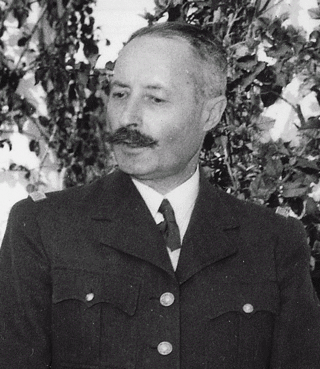
Henri Honoré Giraud was a French military officer who was a leader of the Free French Forces during the Second World War until he was forced to retire in 1944.
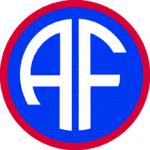
Allied Force Headquarters (AFHQ) was the headquarters that controlled all Allied operational forces in the Mediterranean theatre of World War II from August 1942 until the end of the war in Europe in May 1945.

Robert Daniel Murphy was an American diplomat. He served as the first United States Under Secretary of State for Political Affairs when the position was established during the Eisenhower administration.
HMS Seraph was an S-class submarine built for the Royal Navy during the Second World War. Completed in 1942, she carried out multiple intelligence and special operations activities during World War II, the most notable of which was Operation Mincemeat.
Henri d'Astier de La Vigerie was a French soldier, Résistance member, and conservative politician.
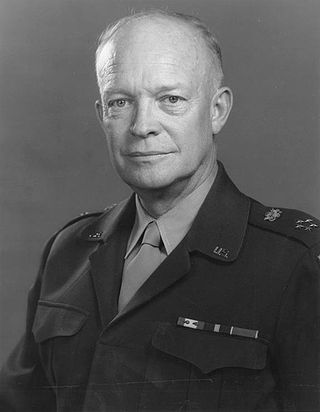
The military career of Dwight D. Eisenhower began in June 1911, when Eisenhower took the oath as a cadet at the United States Military Academy at West Point. He graduated from West Point and was commissioned as a second lieutenant in the United States Army in June 1915, as part of "the class the stars fell on". He rose through the ranks over the next thirty years and became one of the most important Allied generals of World War II, being promoted to General of the Army in 1944. Eisenhower retired from the military after winning the 1952 presidential election, though his rank as General of the Army was restored by an act of Congress in March 1961.

José Aboulker was a French Algerian Jew and the leader of the anti-Nazi resistance in French Algeria in World War II. He received the U.S. Medal of Freedom, the Croix de Guerre, and was made a Companion of the Liberation and a Commander of the Légion d'honneur. After the war, he became a neurosurgeon and a political figure in France, who advocated for the political rights of Algerian Muslims.
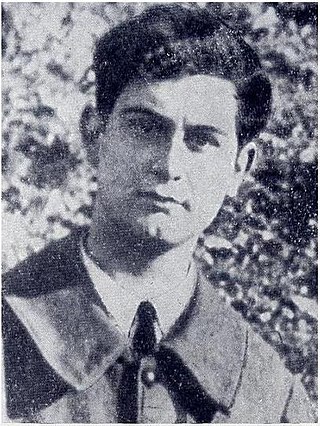
Fernand Bonnier de La Chapelle was a royalist member of the French Resistance during World War II. He assassinated Admiral of the Fleet François Darlan, the former chief of government of Vichy France and the high commissioner of French North Africa and West Africa, on 24 December 1942.
The following events occurred in November 1942:
Bernard Karsenty, was a member of the French Resistance during World War II. He was a leader of the Algiers putsch of 1942.
The French State, popularly known as Vichy France, as led by Marshal Philippe Pétain after the Fall of France in 1940 before Nazi Germany, was quickly recognized by the Allies, as well as by the Soviet Union, until 30 June 1941 and Operation Barbarossa. However, France broke with the United Kingdom after the destruction of the French Fleet at Mers-el-Kebir. Canada maintained diplomatic relations until the occupation of Southern France by Germany and Italy in November 1942.

The French Committee of National Liberation was a provisional government of Free France formed by the French generals Henri Giraud and Charles de Gaulle to provide united leadership, organize and coordinate the campaign to liberate France from Nazi Germany during World War II. The committee was formed on 3 June 1943 and after a period of joint leadership, on 9 November it came under the chairmanship of de Gaulle. The committee directly challenged the legitimacy of the Vichy regime and unified all the French forces that fought against the Nazis and collaborators. The committee functioned as a provisional government for Algeria and the liberated parts of the colonial empire. Later it evolved into the Provisional Government of the French Republic, under the premiership of Charles de Gaulle.

Admiral Jerauld Wright was an officer in the United States Navy. He served as the Commander-in-Chief of the United States Atlantic Command (CINCLANT) and the Commander-in-Chief of the United States Atlantic Fleet (CINCLANTFLT), and became the second Supreme Allied Commander Atlantic (SACLANT) for the North Atlantic Treaty Organization (NATO), from April 1, 1954, to March 1, 1960, serving longer in these three positions than anyone else in history.
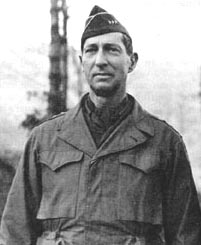
Operation Flagpole was part of the run-up to Operation Torch, the planned Allied invasion of North Africa during World War II. It involved arranging for and carrying out a top-secret high-level meeting between U.S. General Mark W. Clark, representing the Allies, and Général Charles E. Mast, the leader of a group of pro-Allied Vichy France officers in French North Africa, to secure their cooperation with the invasion.

Emmanuel Charles Mast was a major general who participated in the liberation of North Africa in 1942 and was Resident General of France in Tunisia between 1943 and 1947.

The Géo Gras Group was a French resistance movement that played a decisive role during Operation Torch, the British-American invasion of French North Africa during World War II.
The French Civil and Military High Command was an administrative and military governing body in Algiers that was created in connection with the Allied landings in French North Africa on 7 and 8 November 1942 as part of Operation Torch. It came about as a result of negotiations between the Americans and two military figures from Vichy France whom the Americans believed could assure safe passage for the landing forces, namely Henri Giraud and François Darlan.
















